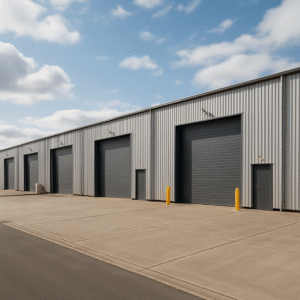If you haven’t heard that construction costs have gone through the roof, you must be living under a rock – or at least you must have been lucky enough to get your roof trusses before 2021!
HomeBuilder was a great idea to save the construction industry from certain collapse. Unfortunately, like so many government schemes, something goes wrong in between the concept and the aftermath.
First home buyers building a new home got $40,000 of free money (more or less from state to state), which on an entry-level outer-suburbs home (or middle-ish-ring townhouse) of say $450,000, equates to about a 9% deposit. Combine that with nil stamp duty in Qld for those first home buyers and lenders willing to do 90+% LVR home loans…
Deposit? Who needs a deposit?! Guess what ensued…
Across the country, good luck getting your foot on a block of land. It was back to the days of LITERALLY having to camp out in a line to get the opportunity to get a block, which you’ll pay $20,000 more than the people yesterday paid, for a block that will get delivered next year.
Homebuilders got a massive influx of new customers… 101 of Supply/Demand then kicked in when all of these builders started ordering materials and lining up their subbies…
Projects are now having major cost blow-outs – we’re seeing 20% and even 25% increases becoming common-place – which is really hurting feasibilities, even completely killing projects that already had tight margins.
Costs for all types of projects are getting pushed up, by both materials and labour.
There’s been a few builders go under, but we’re betting that there will be a wave of builders go broke – a combination of profit margins getting squeezed into the red and the normal cash flow drain of rapid growth (which builders are notoriously bad at understanding). Word on the street is that one of the big home builders has even been offering people $10-15,000 cash to let them rip up their build contracts!
How do you protect yourself? Here’s our opinion:
- Choose a builder with a strong balance sheet and solid reputation – As much as you might be inclined to go with the cheapest option so that the project stacks up, unfortunately the cheapest option often ends up being expensive in other ways (whether that’s them going broke, or simply that they’ll make it up with a long list of variations during the build).
- Be realistic with early-stage cost estimates – Now is not the time to be optimistic with your feasibility forecast; getting a Quantity Surveyor in early to run a detailed estimate can be well worth doing so (a good QS can provide a lot more value than just ticking the bank/lender’s conditions).
- Value Management (“VM”) – and smart engineering, particularly on larger multi-storey projects, can generate big savings (especially if you didn’t get early-stage input into the building design).
- Use a Construction Lawyer, not industry-standard Building Contracts – They might be fine for houses or very small projects, but for most property developments they leave massive gaps, which can leave you exposed to big variations. Invest in getting a good construction lawyer to write up the build contract to make it as water-tight as possible.
- Don’t pre-sell too early – In a market where both values and costs are rising, you risk putting yourself in a corner if you sell at yesterday’s prices and then cop tomorrow’s build cost. This can be easier said than done, particularly if you have a decent number of things to sell, as well as the fact that builders may not be willing to lock in a price too far out. Getting the balance right can be tricky, but keep this risk in mind and try as best you can.



